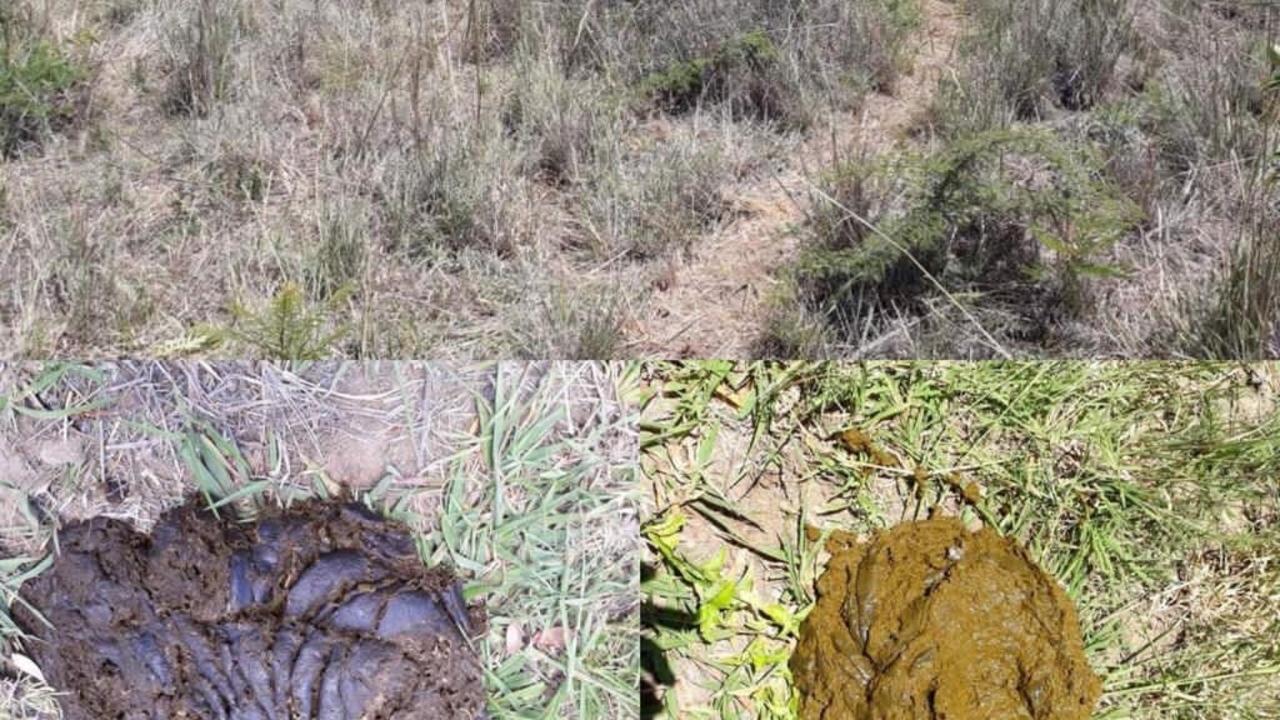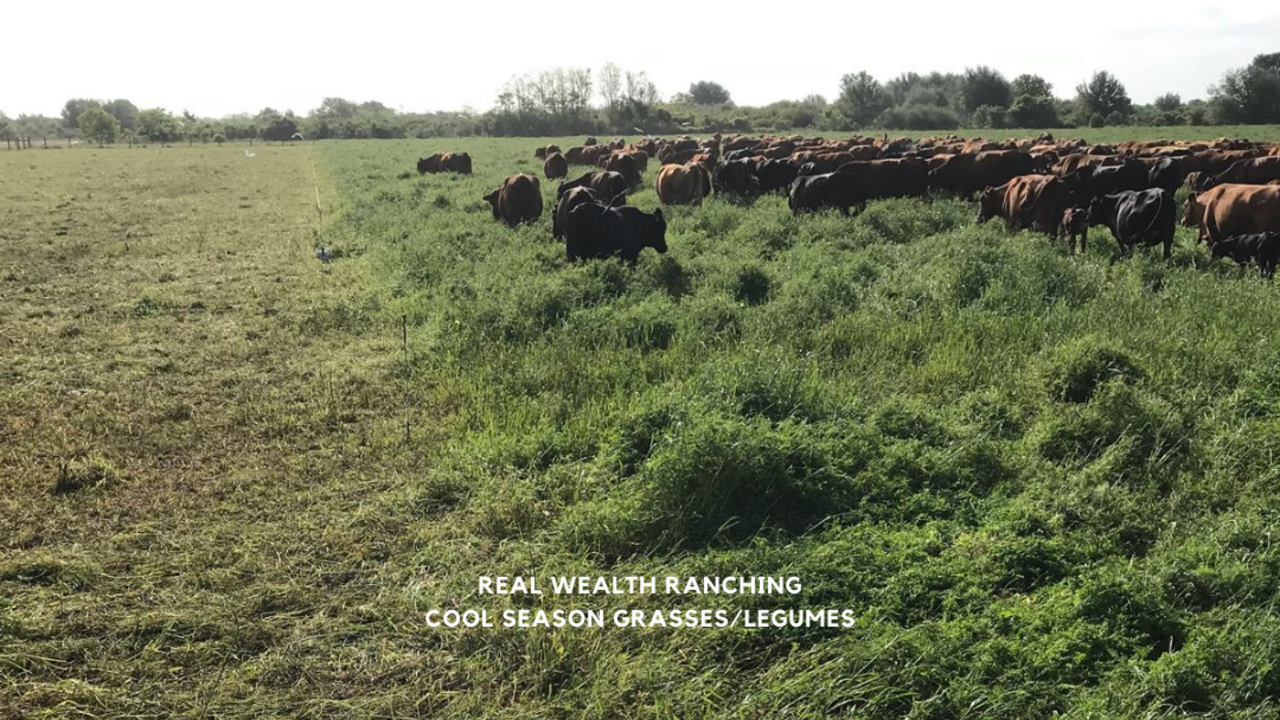#6 Superb Adapted Genetics and Better Pasture with Matt Robbins
I wanted to invite Matt Robbins to the show because I knew his journey is going to motivate you and push you to the exact steps you need to take action.
He has superb genetics, better and leafier pastures, great body condition in his cattle and work/life balance.
You see, after doing rotational grazing (all kinds of it) since 2001, he has been doing Total Grazing for 2 years and just this recent year he has implemented what he has learned in the program.
Without those things that he learned he wouldn't be able to be where he is today. He was missing a few critical things that really improved the productivity of the land, the health of their cows and their own wellbeing.
Want to know what they are? Listen to this great podcast episode with Matt. He shares what were the most important steps he had to take to get the results he now has.
I asked him what he wanted to say to people who were in the fence about enrolling in the program and this is what he said, "Save yourself all th...
Make Better Use of the Grass You Already Have
I am Jim Elizondo and this is Fat Cows, Fat Wallet.
Today’s topic is, “Make better use of the grass you already have”.
One of my mottos is to always work with what you already have. If we are always thinking about when I have better grass, when I improve my cattle genetics, when my land is improved and so on, when I have more rain, when I have a better year, less work, and the list goes on and on. If we are waiting for the perfect moment, it will for sure, never come.
So today we are going to talk about using what you have. Make better use of the grass that you have right now, at this moment.
Now, you have been listening to me for a while and you know that I always, always say that what determines profitability is the number of productive animals you can carry at a low cost per year.
What I also mention is that a long time ago, myriads of animal species in nature used to graze it all and now, we use electric fences and high animal density with our cattle to achieve the same.
T...
#1: What is Total Grazing? The How, What and Why it Works
Transcript.
Hello, welcome to the first episode of the Fat Cows, Fat Wallet Podcast. I’m your host, Jim Elizondo.
When I’m out in the world and I’m speaking with other ranchers or farmers and they ask me what type of grazing I do, and I explain to them, the looks I get from them are very entertaining and show a lot of confusion.
Sometimes they just change the topic or they’ll say something like, “Oh that’s cool”. But all in all, I usually have to explain what I mean. And I thought, you know, I bet others of my Total Grazing students deal with the same thing. So why not start this podcast with an episode to help all of us to better explain what we do, because it goes beyond an isolated grazing event. It’s more advanced than that, it’s more detailed than that and it’s part of a bigger picture. So in today’s episode, I talk in detail about what exactly Total Grazing is and how it works within a ranching business. And I’m going to give examples of ranchers practicing Total Grazing an...
Total grazing is beneficial for the land

There is a big difference between selective grazing where the animal is allowed to graze the species and parts of species that it prefers and Total grazing where the animal is not allowed that luxury and has to consume most everything on offer.
To have the cattle thrive under this management the grazing periods need to be short, so the rumen has a constant quality of feed coming into this wonderful batch system that is the rumen. Around every two hours is the optimum but this will depend on quality of forage on offer.
This takes some experience to do successfully so the cattle are getting enough breaks and area to do well (full gut at the end of the day, good looking manure, pre grazing and post grazing pasture mass).
The benefits to the environment are:
- Plants have the old growth removed, which allows the sunlight to reach the growing points to where better and more tillers are produced.
- The animal density needs to be higher to make the animals to achieve total grazing, this a ...
Protein supplementation on stockpiled forage

We have been a bit busy finalizing the Total Grazing course... but we are back on track on the blog posts!
Wanted to share with you the importance of protein supplementation on stockpiled forage.
Bacteria in the rumen have a minimum protein requirement to be able to digest fiber efficiently.
The normal minimum is around 8 % for these bacteria to be able to be efficient. The consequences of not meeting this minimum will vary depending on the environment and the amount of fiber in the forage.
Under low content of lignin in the forage the cow will be able to overeat up to 40 % above her dry matter requirements to be able to make up for the deficiency thus decreasing the amount of cattle carried on a given area of ground.
This is very important under conditions of forage shortages or when land is expensive and we want to optimize number of cows per ranch
Number of cows per ranch is the most important factor determining profits per ranch, it is far more important than % f...
How to manage cool season forage for maximum health and profits

Cool season grasses and legumes are VERY different in composition than warm season perennials.
When lush and growing fast they are very high in protein, low in fiber and their energy is in the form of sugars which causes acidosis and it’s the reason that the drying manure forms a white crust when this is not addressed.
The reason is that sugar is very high in oxygen or soluble carbohydrates on a dry matter basis, and if we consider the acidosis plus the excess ammonia produced in the rumen we can see why more health problems develop.
When such forages are digested the microorganisms in the rumen digest the carbohydrate portion of the excess amino acids belching, so to speak, the ammonia which being a gas goes through the rumen walls and enter the blood stream causing high pH.
This excess ammonia gas is also the main cause of frothy bloat.
While the rumen is having to cope with the lactic acid produced by the digestion of the high sugar content in these forages the blood and urine ...
Leaf to stem ratio under high stocking rates

When we graze tall all the time there is shade and if done all the time this shade to the growing points leads to some of them dying, when this happens we start to get wider inter plant spacings which is undesirable.
We can get very large plants with wider plant spacings but we want high production of leaves per square yard not high production per plant.
This is the same as beef production per acre not beef production per animal or the same as high corn production per acre not high corn production per plant.
If we take off 10-20 % and trample the rest (if forages are low fiber due to environment and the don't spring back up) it means that we need to come back 5 to 9 times faster which also means that the most desirable species will be re grazed before they recover completely. If, on the other hand, we don't increase stocking rate so we can afford to selectively graze only 10-20 % of the grass on offer we are missing on possible profits that a higher stocking rate wo
...
